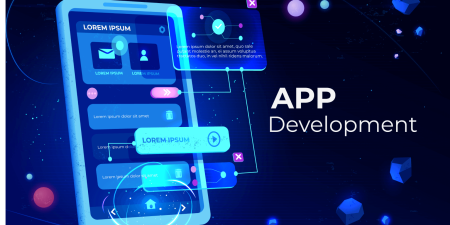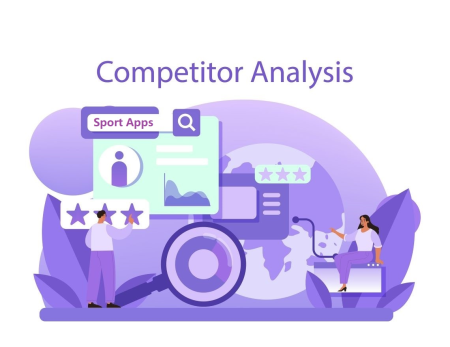In-app purchases have become an increasingly popular monetization strategy for mobile apps. With in-app purchases, developers can offer users additional content or features within the app. That they can purchase using real money. This strategy has proven to be highly effective in generating revenue. It can be used in various apps, from games and entertainment to productivity and utility apps. You can buy app reviews from real users for iOS, and Android apps, and games.
In-app purchases offer several benefits for developers. First and foremost, they provide a reliable source of revenue that can be used to support ongoing development and maintenance costs. In addition, in-app purchases can help to drive user engagement and loyalty by offering additional content or features that users may find valuable. However, implementing in-app purchases effectively requires careful planning and execution. Developers must ensure that their in-app purchase strategy is aligned with their app's overall goals and user experience. They must also take steps to promote in-app purchases effectively. Handle transactions securely and transparently, and measure and optimize in-app purchase performance over time. In this article. We will explore the various aspects of in-app purchases for apps, including how they work, identifying revenue opportunities, and designing effective in-app purchase experiences. Promoting in-app purchases, handling transactions, and measuring and optimizing in-app purchase performance. By understanding these critical aspects of in-app purchases, developers can successfully implement them. This monetization strategy maximizes revenue potential while delivering a great user experience.
Related posts
Apple Search Ads for iOS apps: The Guide for iOS Apps Marketers
The Essential Guide to App Store Optimization for iOS
1. Understanding In-App Purchases for Apps
In-app purchases (IAPs) are a monetization strategy mobile app developers use to generate revenue from their apps. Here are some smaller ideas that provide more detail on understanding in-app purchases:
- Definition: In-app purchases are virtual goods or services that can be purchased within a mobile app using real money or other forms of payment, such as gift cards or store credit. Examples of in-app purchases include premium features, additional content, subscriptions, and virtual currency.
 Unlocking the Power of In-App Purchases for Apps: Maximizing Revenue Potential. Source: Asoservice.com
Unlocking the Power of In-App Purchases for Apps: Maximizing Revenue Potential. Source: Asoservice.com
- Types of IAPs: There are several types of in-app purchases, including consumable, non-consumable, and subscriptions. Consumable IAPs are items. That can be used once and then must be repurchased (e.g., in-game currency), while non-consumable IAPs are permanent items that do not expire (e.g., ad-free versions of an app). Subscriptions provide users access to ongoing content or services for a fixed period.
- Benefits of IAPs: In-app purchases offer several benefits for app developers and users. Developers provide a revenue stream that can help sustain their business. They can also increase user engagement and loyalty. For users, in-app purchases can enhance their app experience by providing access to premium features or additional content.
Overall, understanding in-app purchases is crucial for app developers looking to monetize their apps and provide value to their users. Developers can unlock the power of in-app purchases. And maximize their revenue potential by offering in-app purchases that align with their core functionality and user needs. App developers can buy Top app keyword ranking, Top 1, Top 3, and Top 5 to increase app users.
2. Identifying Revenue Opportunities with In-App Purchases for Apps
Identifying revenue opportunities with in-app purchases is a critical step in maximizing the revenue potential of your app. Here are some smaller ideas to consider when identifying revenue opportunities:
What are In-App Purchases (IAPs)? How to Increase Your App Revenue. Source: Youtube
- Analyzing user behavior: Understanding how users engage with your app and what features they use most frequently can help identify potential revenue opportunities. For example, if many users spend a lot of time on a particular feature. You could offer an in-app purchase to unlock additional features related to that area.
- Offering in-app purchases that align with your app's core functionality: In-app purchases should be relevant to your app's core functionality and add value to the user experience. For example, if your app is a game. You could offer in-app purchases for power-ups or extra lives.
- Implementing effective pricing strategies: Pricing is critical to any in-app purchase strategy. Developers should experiment with different pricing models to find the optimal price point for each type of in-app purchase. Some effective pricing strategies include tiered pricing (e.g., offering different levels of content at different price points), bundles (e.g., offering a discount for purchasing multiple items together), and timed sales (e.g., offering a discount for a limited time). App developers should buy keyword app installs to improve app keyword ranking.
By analyzing user behavior, offering relevant in-app purchases, and implementing effective pricing strategies, developers can identify revenue opportunities and maximize the revenue potential of their apps.
3. Designing Effective In-App Purchase for Apps Experiences
Designing compelling in-app purchase experiences is essential to encourage users to make purchases and maximize revenue potential. Here are some smaller ideas to consider when designing compelling in-app purchase experiences:
Best 20 Example UI/UX Design For Mobile App | UI/UX Animation Design. Source: Youtube
- Creating a seamless and intuitive user experience: The in-app purchase process should be as simple as possible, with minimal steps required to purchase. Developers should also consider integrating payment options familiar to users. Such as Apple Pay or Google Wallet, to simplify the process.
- Providing clear and concise information: Users should have access to clear and concise information about each in-app purchase, including pricing, features, and any restrictions or limitations.
- Designing visually appealing in-app purchase interfaces: The design of in-app purchase interfaces should be visually appealing and encourage user engagement. Developers can use color, animation, and other design elements to make the interface stand out and draw the user's attention to the available purchases.
By creating a seamless and intuitive user experience, providing clear and concise information, and designing visually appealing in-app purchase interfaces. Developers can increase users' likelihood of making purchases and maximizing revenue potential.
4. Promoting In-App Purchases for Apps
Promoting in-app purchases is an integral part of maximizing the revenue potential of your app. Here are some smaller ideas to consider when promoting in-app purchases:
- Using targeted push notifications: Push notifications can effectively promote in-app purchases to users who are most likely to be interested. Developers can use user behavior and preferences data to send targeted notifications highlighting relevant in-app purchases.
- Implementing a referral program: Referral programs can encourage users to share your app with their friends and family and offer incentives for the referrer and the person they refer. This can help increase app downloads and drive more in-app purchases.
- Offering free trials or introductory pricing: Offering free trials or introductory pricing can be an effective way to introduce users to in-app purchases and encourage them to purchase. This can help build trust with users and increase the likelihood. That they will make additional purchases in the future.
- Using social media to promote in-app purchases: Social media can effectively promote in-app purchases and increase user engagement. Developers can use social media platforms to highlight new in-app purchases. Share user testimonials, and offer exclusive discounts or promotions.
How to promote In-Apps in the App Store and monitor the results? Source: Youtube
By using targeted push notifications, implementing a referral program, offering free trials or introductory pricing, and using social media to promote in-app purchases, developers can effectively promote their in-app purchases and maximize revenue potential.
5. Handling In-App Purchase for Apps Transactions
Handling in-app purchase transactions is critical to maximizing revenue potential and ensuring a positive user experience. Here are some smaller ideas to consider when handling in-app purchase transactions:
- Ensuring secure transactions: Security is a top priority when handling in-app purchase transactions. Developers should ensure that all transactions are encrypted, and user information is secure.
- Providing receipts and confirmation emails: Providing users with receipts and confirmation emails after purchase helps to build trust and transparency. These emails should include details about the purchase. Including the amount charged and any applicable taxes or fees.
- Handling refunds and disputes: Developers should have a clear policy for handling refunds and disputes related to in-app purchases. This policy should be easily accessible from within the app and provide users with a clear path for resolving any issues.
- Tracking and analyzing transactions: In-app purchases can provide valuable insights into user behavior and preferences. Developers should use this data to refine their in-app purchase strategy and improve the user experience.
By ensuring secure transactions, providing receipts and confirmation emails, handling refunds and disputes, and tracking and analyzing transactions, developers can effectively manage in-app purchases and maximize revenue potential while ensuring a positive user experience.
6. Measuring and Optimizing In-App Purchase for Apps Performance
Measuring and optimizing in-app purchase performance is critical to ensuring long-term revenue growth and maximizing the success of your app. Here are some smaller ideas to consider when measuring and optimizing in-app purchase performance:
- Setting clear performance goals: Developers should establish clear goals for their in-app purchase strategy, such as revenue growth, conversion rates, or average purchase value. These goals should be regularly reviewed and updated based on performance data.
- Using analytics tools: Analytics tools can provide valuable insights into user behavior, purchasing patterns, and in-app purchase performance. Developers should use analytics tools to track key metrics, such as conversion rates, retention rates, and revenue, and identify improvement areas.
How to Optimize In-App Events & In-App Purchases. Source: Youtube
- Experimenting with different strategies: Developers should use other in-app purchases to identify what works best for their app and user base. This might include testing different pricing models, offering different types of content, or using different promotional strategies.
- Continuously optimizing the user experience: The user experience is critical to the success of any in-app purchase strategy. Developers should continuously optimize the user experience by testing and refining the in-app purchase process, ensuring it is as smooth and user-friendly as possible.
By setting clear performance goals, using analytics tools, experimenting with different strategies, and continuously optimizing the user experience, developers can measure and optimize in-app purchase performance to maximize revenue potential and ensure long-term success.
Conclusion
In-app purchases have become an increasingly important monetization strategy for mobile apps, offering developers a reliable source of revenue while providing users with additional content or features they may find valuable. However, implementing in-app purchases effectively requires careful planning and execution, from identifying revenue opportunities to designing compelling purchase experiences and promoting in-app purchases. By taking a user-centric approach and ensuring that in-app purchases align with the overall goals of the app, developers can maximize revenue potential while delivering a positive user experience. In addition, handling transactions securely and transparently, providing clear receipts and confirmation emails, and handling refunds and disputes effectively are all critical to building user trust and ensuring long-term success. Finally, measuring and optimizing in-app purchase performance over time is essential to maximizing revenue potential and ensuring the strategy remains effective over the long term. By setting clear performance goals, using analytics tools, experimenting with different strategies, and continuously optimizing the user experience, developers can stay ahead of the curve and maximize the revenue potential of in-app purchases.
Related posts
Source: App Store Optimization services














Leave a Reply
Your e-mail address will not be published. Required fields are marked *